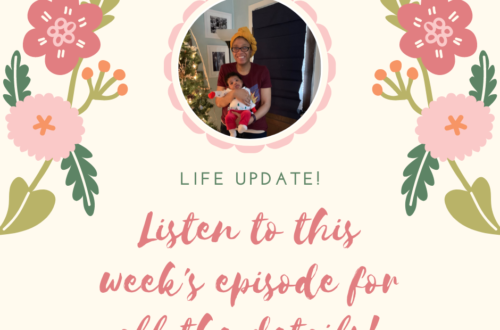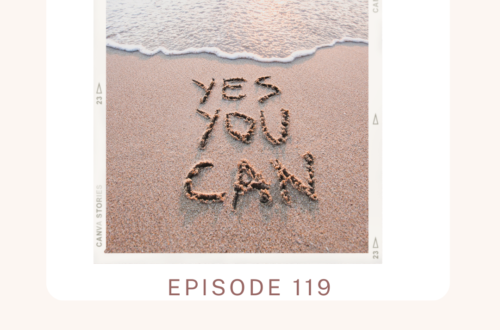
Close Reading
Welcome back, Teachers. I am Millie and I am your host of the My Adventures in ESL podcast. Today we are going to be talking about how you can plan close reading lessons for your language learners. Now, before we jump into today’s topic, I would like for you to reflect on your “wins” for the week. I know one of mine is that I reviewed the curriculum and saw that there were a lot of close reading activities that I needed to plan for this upcoming school year.
As I reflected on last year, I saw that I did a really great job of structuring how I taught my close reading lessons. And that is my win that I am really proud of.
Every week I want to highlight a teacher’s “win”, I want to celebrate your “wins’. Like I always say, it can be big or small, but they are to be celebrated. Because each win, every single day that you have one and you have one every day, starts to add up. They really, really, really mean something to the students and to you. So celebrate those “wins”. You can bring them to our community, My Adventures in ESL on Facebook, or you can always email me at millie@myadventuresinesl.com to share those wins.
This week’s win comes from Andrea. And Andrea has been doing a really great job this summer of planning and preparing for the upcoming school year. She has been taking professional development. She has been planning her lessons, asking for feedback, brainstorming, sharing resources and she has been doing a really great job. So shout out to Andrea and all of the hard work that she’s been putting in to prepare for this upcoming school year.
So let’s go ahead and dive in today’s podcast topic about planning close readings for your students. A lot of times, when I go to a teacher planning meeting, they always say, “yeah, you can just do a close read with your language learners”. You might be sitting there thinking, that’s great, but how can I make close reading work for my language learners? You also might be wondering where do you start or how do you even plan for a close reading in your classroom? If you’re listening and you’re wondering what is a close read? Let me break that down for you really quickly before we jump into the details of today’s episode. A close read is reading and analyzing a passage or a piece of text. This can be done over several reads of the text. So the goal is to read and to analyze it. I know when I first started teaching, I was really confused about close reading and even more confused on how this is going to benefit my students, how is me reading aloud two or three times going to benefit my students.
Teachers were claiming that close reading was preferred to all of their reading struggles that they were having with their students. And I was still stuck and confused on how I can make this work for my classroom. I wasn’t getting it. I wasn’t understanding it. I wasn’t making the connections of how I can make close reading work for me and for my students. It really started to frustrate me. Once I get frustrated with something, I just avoid doing it.
And that’s what happened. I just avoided close reading altogether because I wasn’t understanding how I could make this work for my classroom. I just wasn’t understanding how to do close reading for my students. It was not clicking. I knew that there were a lot of benefits, but I just couldn’t wrap my head around how to teach close reading.
How do I plan for close reading for my language learners? One day I was in a class I was taking to get my Master’s in English as a second language, and it popped up again, close reading. The professor was teaching and she was showing videos on how to do close reads in the classroom.
I realized in that moment that I was not going to get away from it, and I was right, I needed to really learn how to make it work. I needed to take the time to learn what close reads are, and how to teach close reading. I needed to get some professional development around it because it wasn’t going anywhere. So the first thing I did was I read some articles and explored Pinterest to discover some strategies.
And from that exploration, I created a system on how I wanted to teach close reading for my students. First I decided that before every passage I build background knowledge. I know in typical close reading strategies, they tell you not to do this, but I do it for my students anyway. I decided that I wanted to do it before every passage and it didn’t have to be anything extensive.
I also created an annotation kit because annotating is really big in close reading. I also created this kit for students to use in their first reading of the text. I have an annotation kit that I can share with you all for free. I’ll make sure to link that in the show notes. Now, in the annotation, I also wanted to make sure that I included things that show where the students were getting confused and where students would need some additional areas of support. I really like that because as a teacher, that’s a very powerful formative assessment that you can do with your students. So I really embraced the annotation part of close reading, and I always included annotation in my close reads. I also became really creative with the re-reads.
In a close reading, you know, most of the time you’re reading the text more than once. Instead of me reading it three times or two students read it twice and I read it once, I decided to record audio. What I would do is I record the audio of myself reading it, and then I would have the students’ partner read, or in some cases I would have like an audio book read. I became really creative so it wouldn’t get redundant and the students wouldn’t get bored with it. I also made sure that I was including very specific skills in the close reading process. For example, identifying the main idea on the first read and then on the second read, have the students identify how the text works by identifying text features.
On the third read, the students could dive deep into what the text means, for example, about making inferences. Understanding those steps of close reading really allowed me to create a plan for my students and my language learners.
So here is my close reading plan for language learners, just to break it down again so you can use it in your classroom for close reading. The first thing you want to do is decide on the text that you’re using with your students. Then look at the data about the reading levels, I like knowing where they are. This helps me to determine what supports in what scaffolds that I’m going to need during the close reading. And then I plan on building a background with my new students around the topic. I do this by incorporating videos and picture books on the topics. I also like using gallery walls. They love gallery walls.
Then plan out your close read by asking yourself these three questions about each read: on the first read, you want to ask yourself, how will students show understanding of the key ideas in the details of the text? You’ll create a goal on the first read by asking yourself that question. On the second read, ask yourself, how will the students show they understand the craft in the structure of the text. So that’s something that you’ll be asking on your second reading as a goal.
And on the third read, ask yourself how will the students show you that they have integrated new knowledge about the concepts of what they read. For example, this can be done by making connections, sharing their opinion or making inferences. And on each reading of the text, you will need to decide, will the students be reading independently, core reading, will they be doing a partner read? Or are you as the teacher going to read?
The last thing is to plan for formative assessments and check in with the students throughout the close reads. This is going to help you get a clear understanding of where they need help and how they need support. So your next steps are simple, I’ve already given them to you.
But I want you to plan a close reading lesson for the upcoming school year using those steps that I provided. And I would love to know if you’re already using close reads, how are you going to use close reads this upcoming school year? I would like to invite you to the community, My Adventures in ESL, on Facebook, to share how you are going to make this happen this upcoming school year.
Once again, thank you all for stopping in for today’s episode. You can join our community. You can always email me at millie@myadventuresinesl.com. And once again, thank you!! And you have a fantastic week!!





6 Comments
Andrea Gaggiano
Hi Millie, Thanks for the shout-out. I’ve been swamped since school began. I’m just beginning to dig myself out of this hole! I wanted to ask about the link to the annotation kit you mentioned. Also, I was wondering what a gallery wall is. I’ve never heard of it. Hope all is well with you.
Andrea
Millie
Hey Andrea! Here is a link to the kit: https://documentcloud.adobe.com/link/track?uri=urn:aaid:scds:US:51b4c837-46be-4937-9bba-89a15aa656bb
I just simply put into a pencil box with a highlighter, colored pen, and sticky notes.
Stacy Robinson
I would love to check out your annotation kit!
Thanks!
Millie
Hey Stacy!
Here is a link to the kit: https://documentcloud.adobe.com/link/track?uri=urn:aaid:scds:US:51b4c837-46be-4937-9bba-89a15aa656bb
Maria Viera-Williams
Hello, Millie. Thank you for sharing your close reading experiences. I have a favor to ask that would benefit many of us. 1) Please share the close reading as steps that can be applied to any fiction and non-fiction text. 2) video tape yourself doing a close-read of fiction and non-fiction. 3) share the link to the annotation kit you mentioned. 4) decribe the gallery walk, its function (generally, and for you) and a few examples of your gallery walk. 4) Provide links to folders for us to view Close-Reading, Annotations for ELs, Gallery Walks. As possible, have subfolders by grade level groups: (K-3), (4-6), (7-8), (9-12) . Perhaps your online community could assist by sharing thier ideas, lessons, video taped lessons. I am not sure how many submissions you’d get, but if you received a lot, you might need to have some way to view/screen them before they are posted. Future topic suggestions: Digital and face-to-face Bell Ringer/Warm-ups for ELLs, Formative Assessments for ELLs, Exit Tickets for ELLs. –Maria VW
Millie
Hey Stacy!
Here is a link to the kit: https://documentcloud.adobe.com/link/track?uri=urn:aaid:scds:US:51b4c837-46be-4937-9bba-89a15aa656bb